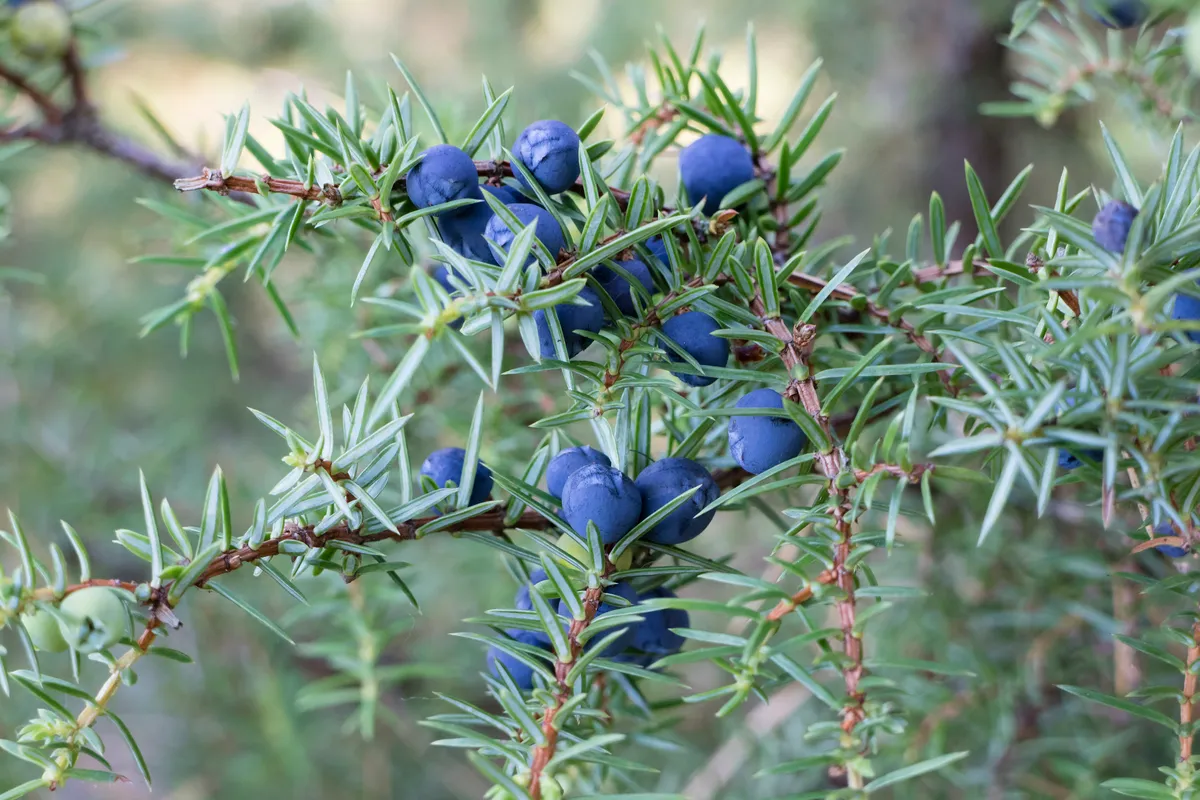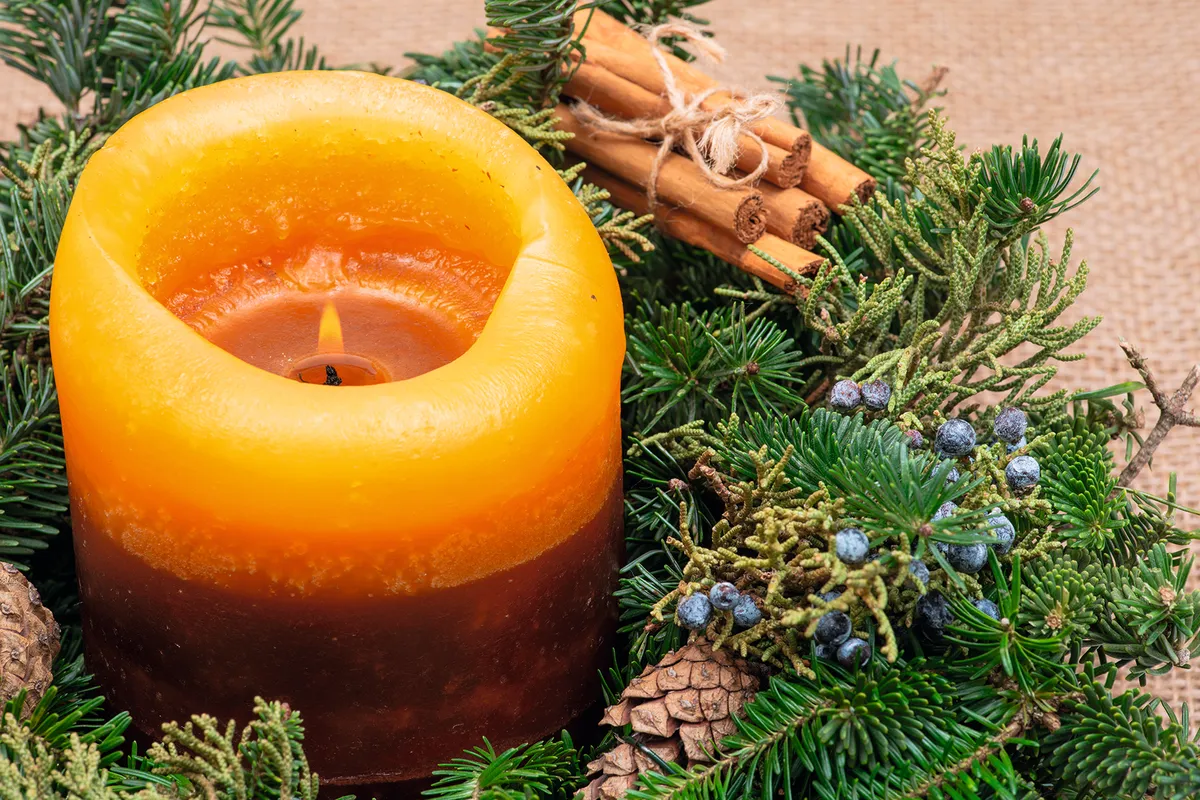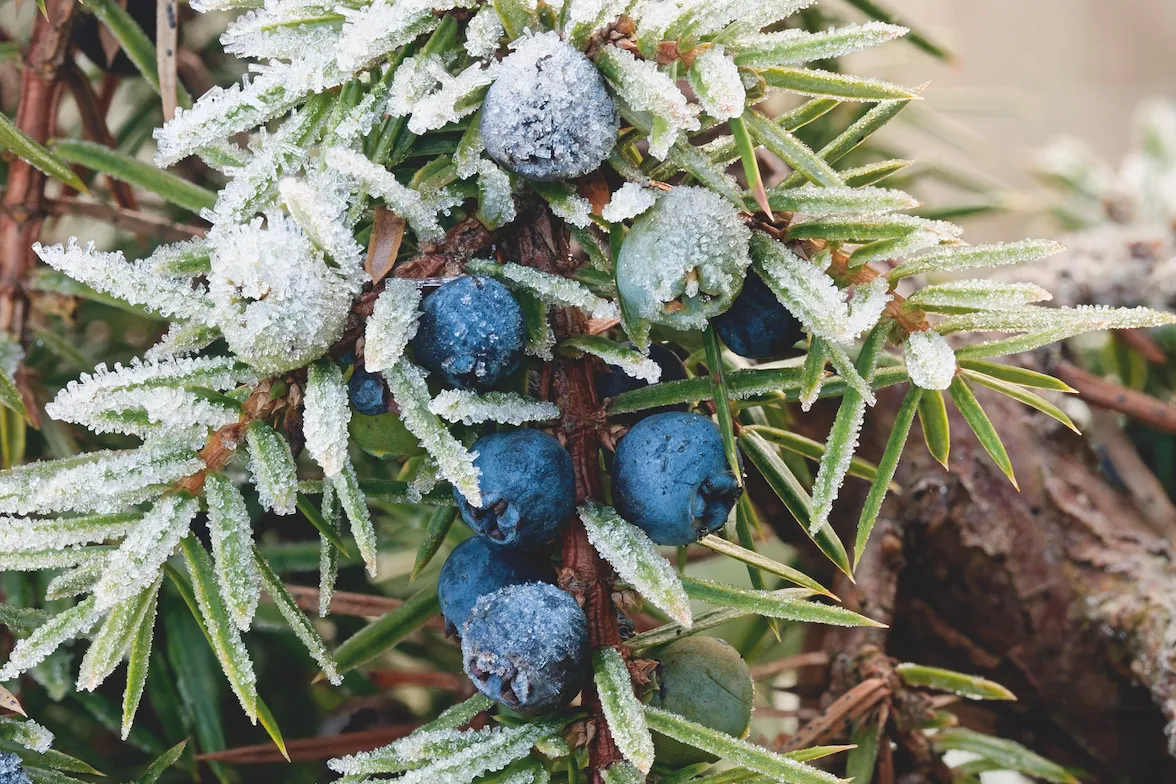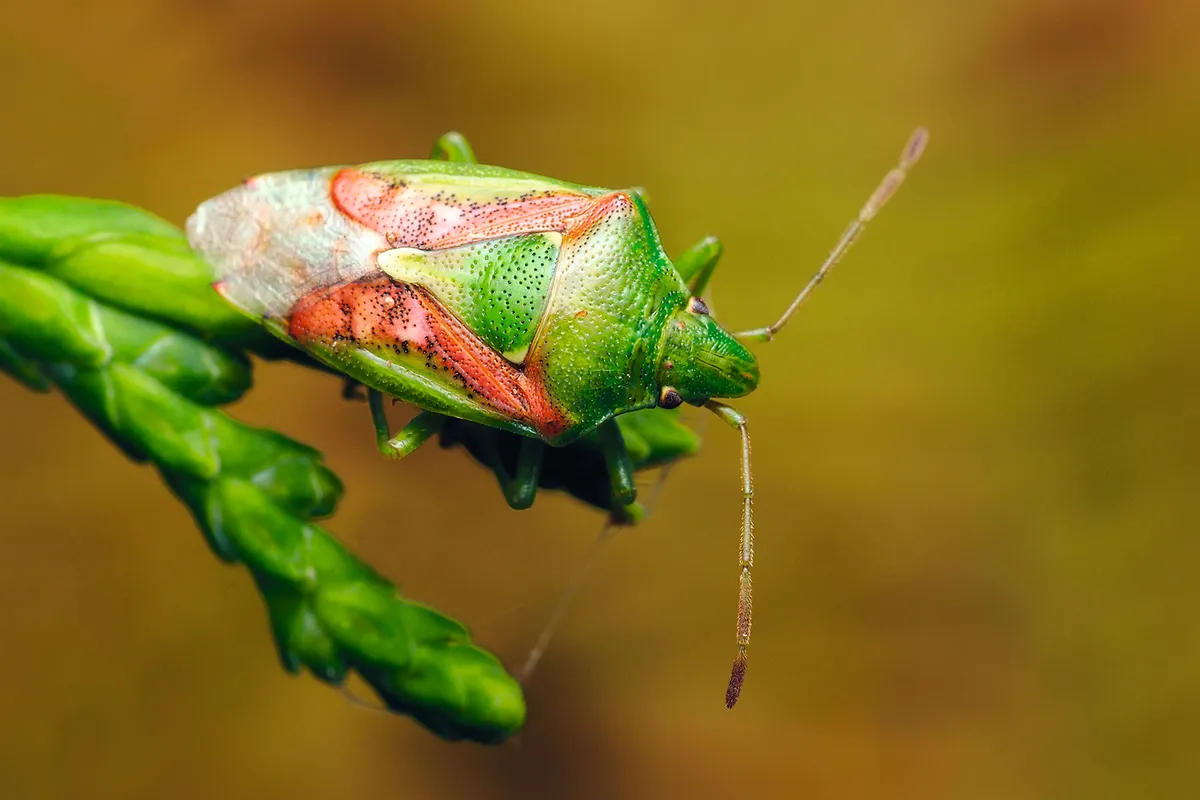It is the tree that shelters us: wizened yet robust, fragrant but fierce, with glass-thin needles and peeling bark, a living book in which folklore and nature are inscribed. Juniper, cast as a protector in stories, is embedded into tradition and history.
The juniper knew Britain when mammoths trampled vegetation and it knows us, one might say, from the uses that we have found for it: our vices supported by the smokeless juniper wood fires once used for illicit whisky production and our fears embodied by doctors stuffing juniper berries in their masks while battling bubonic plague.
Its modern distribution is a lesson in changing land use, and the attention it wins from charities such as Plantlife is a nod to conservationists’ passion.
From folklore and juniper tree symbolism to identification, modern-day uses, distribution and threats, our guide reveals everything there is to know about juniper trees in the UK.

Guide to juniper trees in Britain
Juniper in folklore
The theme of protection never quite leaves juniper, from hares that were said to hide from hounds among the tree’s fragrance to the Old Testament prophet Elijah, who slept under a juniper during his own troubles.
European folklore suggests a more proactive stance: in the Mediterranean area it was once believed that any witch who saw a juniper had an irresistible urge to count the needles, so boughs were suspended over doorways in the hope that any unwelcome visitors would become frustrated with the effort and leave.
Of course, Christmas is particularly loved by children and, fittingly, juniper is a tree that never grows up. Its dense pelt of tiny needles is juvenile foliage; juniper never develops the scale-like leaves of the cypress family’s adulthood. Strange, then, that this Peter Pan of plants has such a grand, sprawling history, hiding out the Pleistocene’s brutal winds and gargantuan ice sheets in sheltered refugia, recolonising fast with its frost-tolerant growth as birds spread its seeds. Individual trees only live up to 200 years in Britain, but related North American species have survived millennia.

Why is juniper symbolic of Christmas?
Christmas remembers. King Herod’s soldiers hunted Joseph, Mary and the infant Jesus on the road to Egypt until their donkey’s strength ebbed, and in its panic it stumbled towards a juniper. The tree hid them behind prickly needles, and Joseph wiped the donkey’s sweat with sweet juniper boughs. An apocryphal legend, admittedly, but as the nights light up with winter constellations and evergreens are brought into living rooms, juniper’s festivity lives on. It was long celebrated in Italy, where stables and cowsheds were decorated with juniper as a nod to Joseph’s donkey.
The custom was exported to the rural United States and now, as a modern twist, one American coffee chain offers a juniper-flavour Christmas latte.

How to identify juniper trees
Often an uneven, fir-like shrub, juniper can also grow as an erect, small tree (rarely over 5m in the UK). Needles are thin and very prickly, with a single lengthwise pale band; they grow very densely in whorls of three and are present in all seasons.
Juniper’s bark is thin, reddish and prone to peeling in long strips. The female tree has clusters of cones – called berries – that superficially resemble sloes. They are initially green then turn purple-black.

What does juniper smell like?
Their fragrance evokes dawn in a pine forest, dusted with a jolt of black pepper.
How do jumpier trees reproduce?
Juniper trees are dioecious, meaning only the female bears fruit – and that fruit weighs down the branches in grape-like bunches with a mixed palette: soft-green like gooseberries, ripening into purple-black like sloes.
Juniper seeds are wind-pollinated and take two to four years to mature, and while usually marketed as berries, they are actually an unusually fleshy cone.
Birds exploit junipers: mistle thrushes are eager benefactors throughout the juniper’s hemisphere-spanning range. In Balochistan, Pakistan, according to a local blogger, mistle thrushes are known as ubosht khour, the juniper eater. In Britain, their competition is song thrushes and blackbirds. Interestingly, seeds excreted by birds are more likely to germinate than those that have simply fallen from the tree.
And germination is a big problem for juniper. Most stands are even-aged, with little evidence of saplings.
Wildlife in a juniper tree
Mistle thrushes energetically defend juniper berries against rivals. They are joined in the needles by our smallest birds – goldcrest and firecrest – which shelter in the dense foliage and prey upon the many insects found there. Caterpillars of the juniper webber, an attractive brown moth with white stripes, form silken webs between the needles.
The juniper shieldbug is found in the southern part of Britain, while the rare black grouse exploits the tree for food and shelter in the north. Hundreds of fungi have been isolated from juniper, including Trichoderma hamatum, which is being investigated by plant researchers for its potential to suppress diseases in crops. Wood mice and bank voles feed on the cones and seeds.

Where do juniper trees grow?
Juniper’s British distribution is now uneven, with strongholds on the chalky hills of the south, and moorlands, rocky hills and open forests in the north. In Scotland, juniper is decreasing but widespread, but it is very localised in Wales. The South Wessex Downs and Moor House – Upper Teesdale National Nature Reserve in County Durham are two important English strongholds.
Three subspecies have been identified in Britain but genetic analysis has thrown them into doubt. What is certain is that the numbers of juniper are in decline, with a 30% range contraction between 1970 and 2002.

Are juniper trees under threat?
Grazing and juniper have a very fragile relationship. The tree prefers a sunny aspect and therefore gains when sheep, deer or rabbits destroy saplings of bigger trees that would close the canopy. But while its leaves don’t appear to be particularly palatable, it will be consumed in harsh conditions.
Sheep grazing in winter seems particularly disastrous, but rabbits also strip the bark, producing juniper-scented droppings. They can be deterred with rabbit exclosures, but on habitats such as chalk downland where heavy grazing is beneficial to other rare plants, reserve managers have a tricky balance to strike.
Some of today’s juniper stands date back to clear moments of history when bare ground was created and then abandoned: the rise and fall of lead mining in Upper Teesdale, or fluctuating rabbit numbers with myxomatosis, for example. Perhaps the truth is that our modern land management is too steady for juniper’s taste.
Juniper tree uses
While it struggles in the wild, juniper has grown in medical annuals. Practical applications of its protectiveness have been around for a while; an 18th-century ‘cure’ for rinderpest – an infectious viral disease of cattle – involved fumigating cowsheds with juniper smoke mixed with gunpowder, pitch and tobacco. The stench must have been indescribable and science proved more effective – rinderpest is now extinct.
But one fungi species hosted by juniper is a promising source of deoxypodophyllotoxin, an important anti-cancer drug. There is even hope that an extract from juniper leaves may reduce the symptoms of Parkinson’s disease.
Like many trees, juniper is an ecosystem in itself. Almost 500 species of fungi and myxomycota (fungus-like moulds) have been recorded as directly associated with juniper, and it also supports specialities such as the juniper carpet moth.
You may also like:
Juniper trees and cooking
“Three ounces of juniper berries,” writes Mrs Beeton in her 19th-century guide to household management, recommending their inclusion in a recipe to cure beef tongue. A sparing dose is all that’s needed; the berries have an intense flavour released by crushing. They are too bitter to eat raw but have been used in stews, curing and drinks for centuries. Today, the BBC Good Food website has 17 recipes involving juniper. Modern food blogs even include juniper sourdough – the berries are dusted in wild yeast.
Juniper and gin
On a Tuscan hillside, foragers carrying sieving trays and wooden sticks pursue juniper. Knocking the ripe, purplish cones from the trees, they avoid the green cones that will mature into next year’s harvest. Gin may have been invented by Italian Benedictine monks in medieval times but it was William of Orange who introduced it to Britain during the Glorious Revolution of 1688 – the name ‘gin’ is derived from the Dutch ‘genever’.
Today, wholesalers still import juniper cones (often called berries) into Britain from Italy and eastern Europe, preferring the higher oil content that develops in the Mediterranean climate. One Scottish gin producer argues this has put too much pressure on these populations, harvesting fresh berries locally instead. It is the aromatic oils, concentrated in the oil sacs of the cones, that impart the flavour; one known as alpha-Pinene is linked to the piney scent. Distilled alcohol, normally from a grain, draws the oil out of juniper cells. Other botanical flavours may be added, but exact recipes for gin are a closely guarded secret.

Juniper tree pests
There is one guest of the juniper tree that is far from welcome. Phytophthora austrocedri is an aggressive pathogen related to potato blight. Arriving in the UK in 2012 from an unknown source, it attacks the roots and stem of both juniper and cypress tress, killing its host. It seems to spread via soil, and just as Covid-19 has taught us to be conscious of how viruses can jump, P. austrocedri is a reminder of how critical it is to wash down our boots and bicycle tyres between outings.
Good biosecurity is a small ask. We have enjoyed the juniper’s protectiveness in folklore and medicine for millennia, and now we should protect it in return.
Words: Adele Brand
